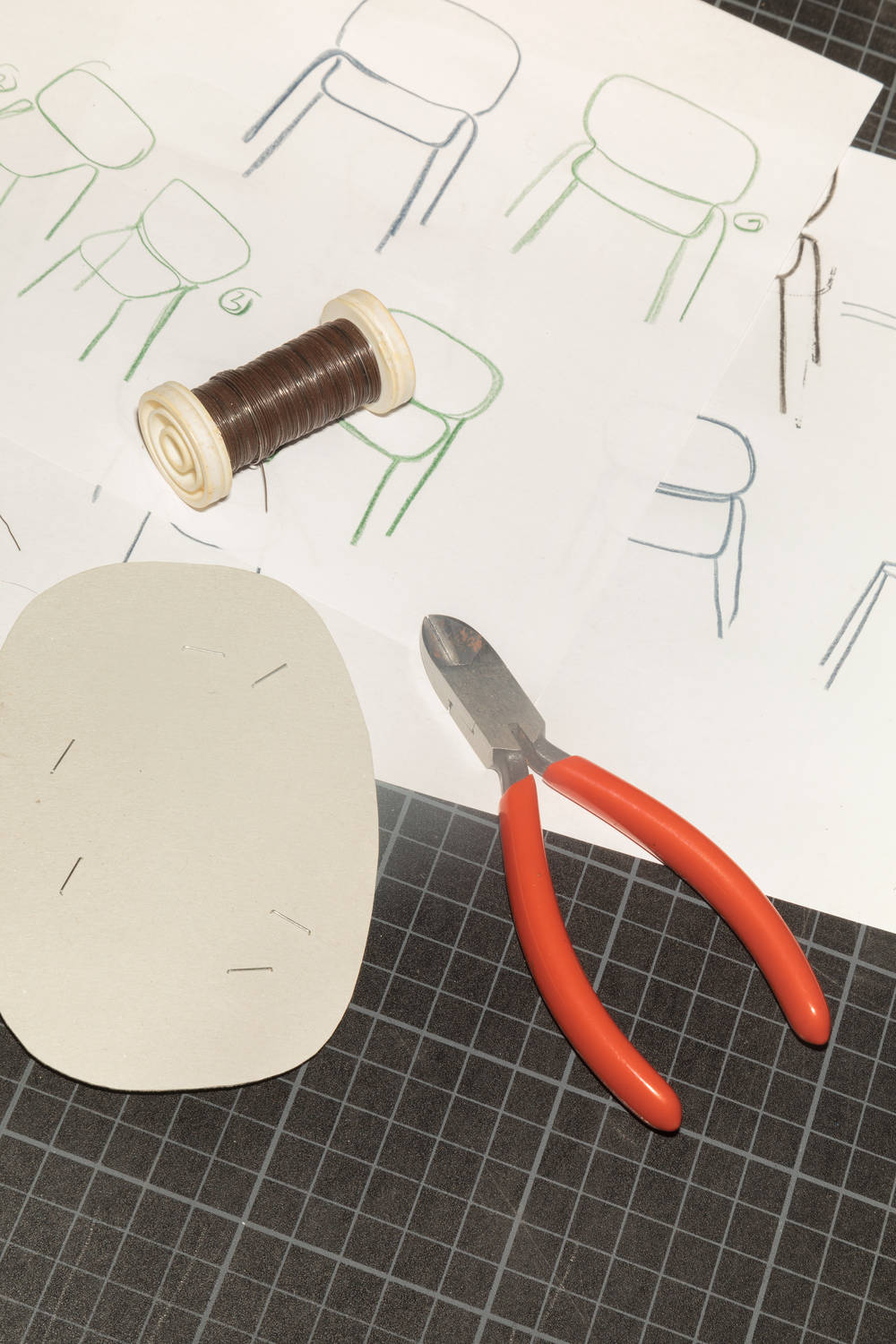Product designer Sebastian Herkner has earned an international reputation with furniture and home accessories. A studio visit in Offenbach.
A rear house on Offenbach’s Geleitstrasse. Light falls through the barred windows on the raised ground floor, which are testament to the building’s past life as a leather warehouse. “This was previously a storeroom for valuable snakeskins and furs”, explains designer Sebastian Herkner when we meet. We sit between heavy-duty shelves almost bending from all the sample materials (lots of fabric, lots of glass). Some of these are slotted into grey boxes.
“Just around the corner, in Kaiserstrasse, there is a shop that makes these boxes to measure”, says an enthusiastic Herkner, who is quick to praise good craftsmanship – even if it’s applied to something as supposedly banal as a cardboard box.
Herkner treasures good craftsmanship
In one corner of the room, a spiral staircase leads up to the first floor. “Down here we build models, while upstairs we have space for meetings, sketches and computer work,” says Herkner, explaining the layout of his two-story studio. Until August of last year, his studio was above his private apartment, but he has since relocated. He needed the extra space. Depending on the scope of the ongoing project, he employs up to four people. Almost directly opposite Herkner’s studio is an outpost to the Hochschule für Gestaltung (HfG) in Offenbach am Main (Offenbach’s University of Art and Design), where the now 37-year-old studied Product Design between 2001 and 2007.
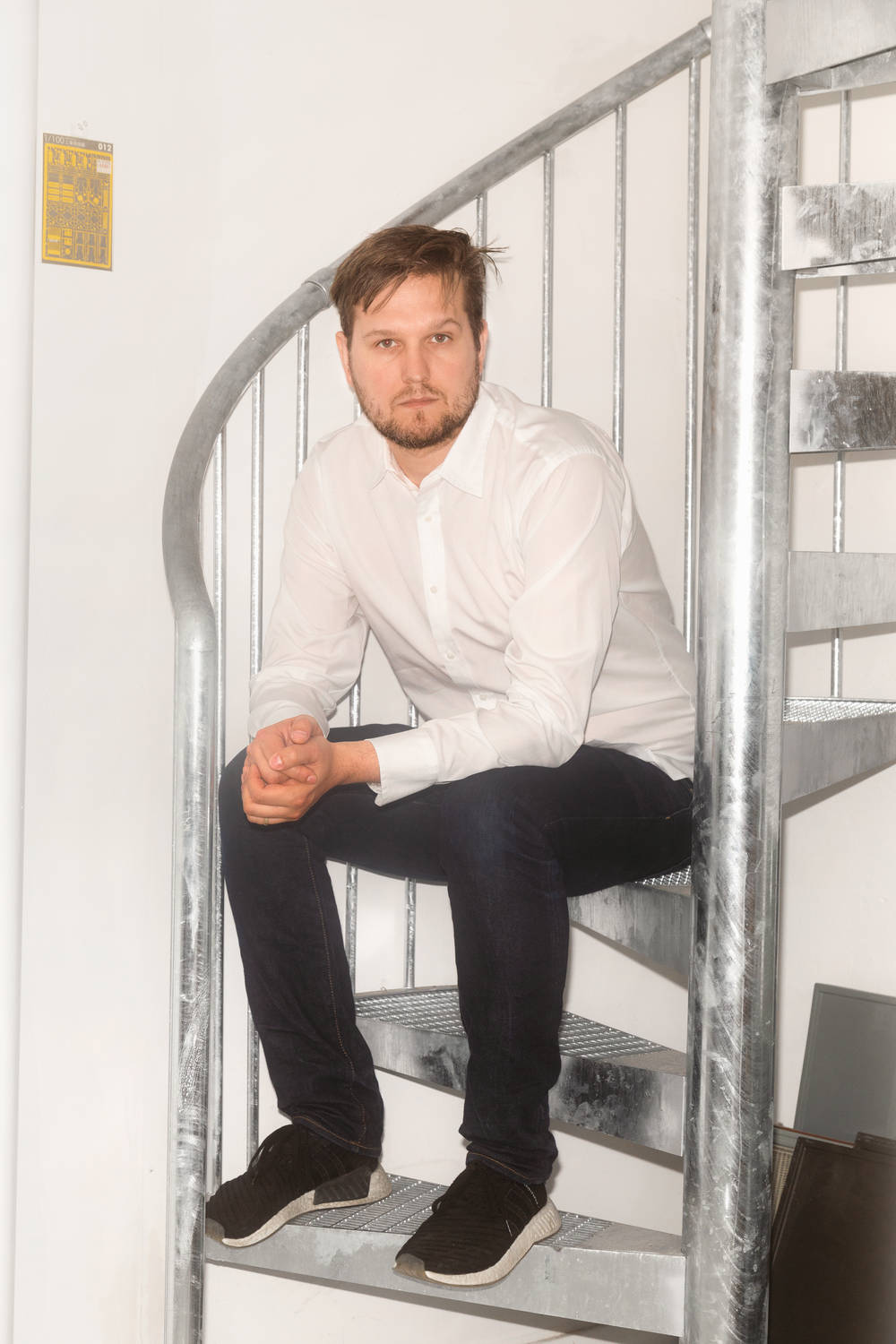
From Bad Mergentheim, his former home, Herkner brought a great appreciation for good craftsmanship. “I think growing up in the country is very different to the city,” he says. “We would build treehouses in the forest and generally make a lot by hand. Many of the homes had workshops in which all sorts of things were manufactured or repaired.”
Glass base and brass plate leveraged the breakthrough
After graduating, Herkner initially worked as an assistant to his professor Peter Eckart. With the money he earned, he funded the development of his “Bell Table”. The side table has been marketed by Munich manufacturer ClassiCon since 2012 and represents Herkner’s professional breakthrough. The bold combination of a bell-shaped glass base with a round brass or copper plate caused a sensation. There are virtually no design magazines that haven’t at some point featured this striking piece of furniture. “One of the biggest challenges was finding a factory that had the necessary expertise to blow the glass for the base,” Herkner recalls.
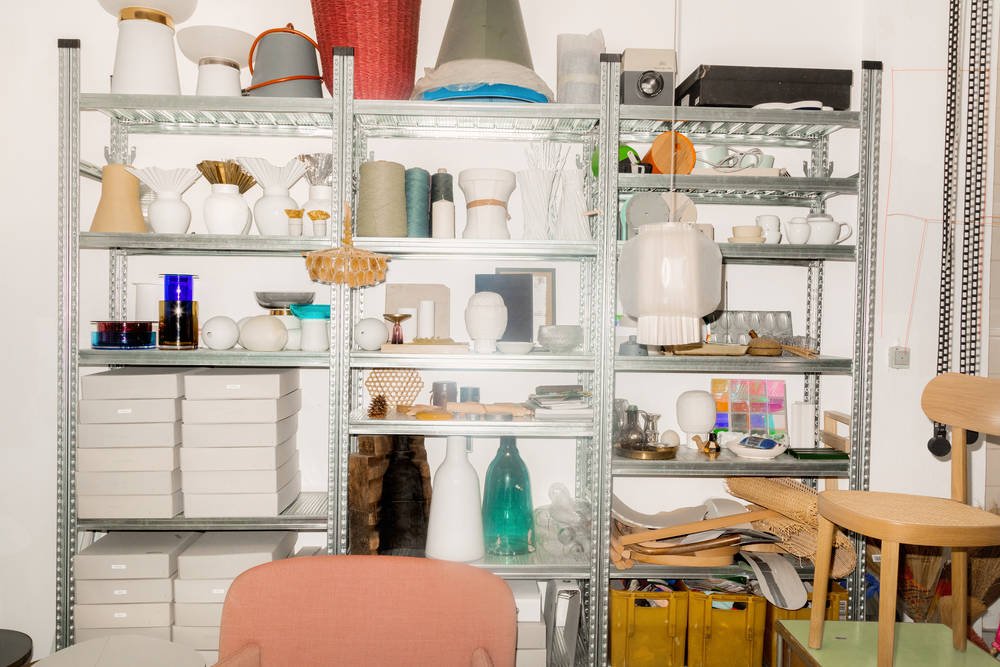
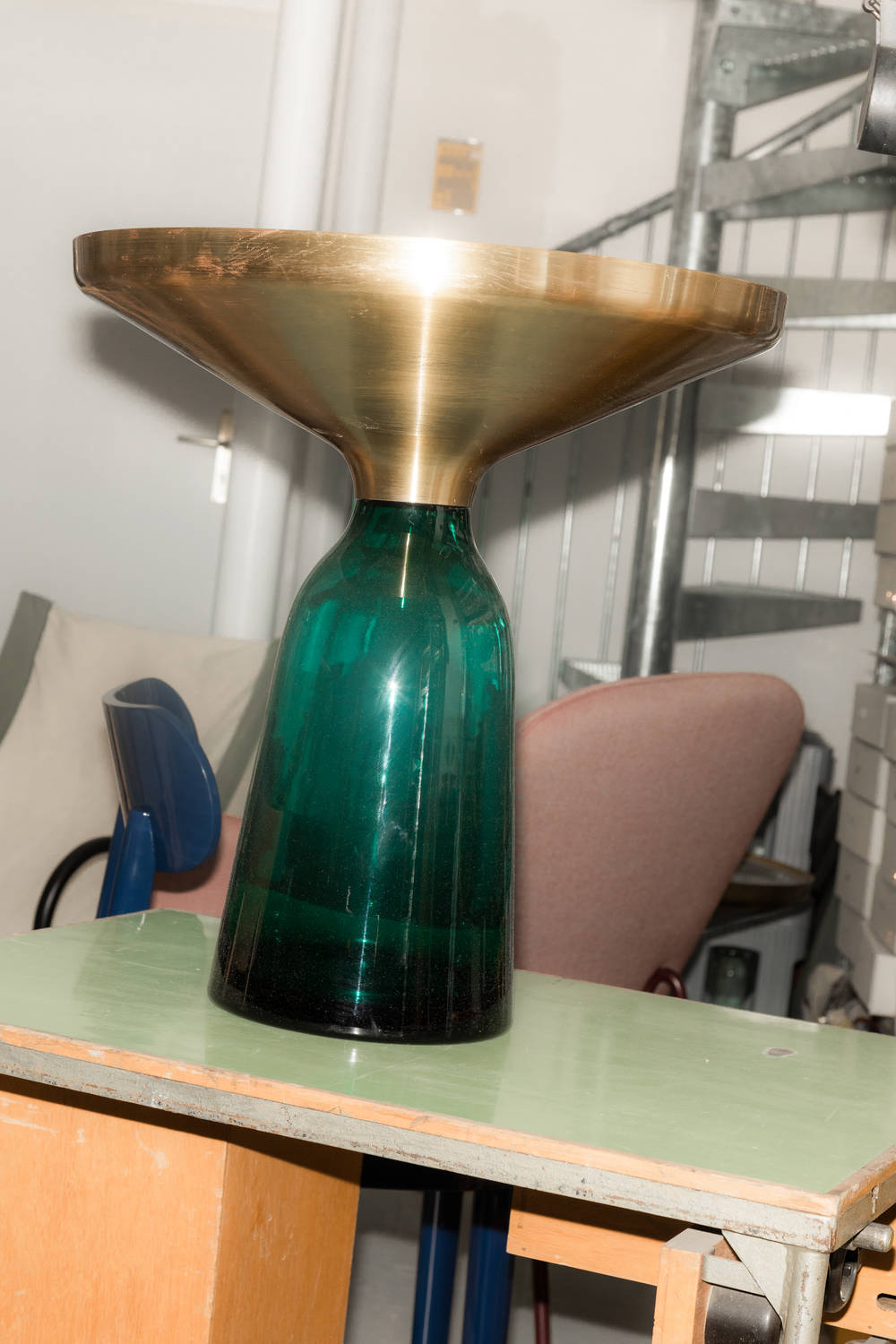
He shows us the hollow mold made of aged, lathed beechwood for the prototype. “Can you see how charred the wood is inside? Nevertheless, the hot glass remains transparent when it is blown at more than 1000°C,” he enthuses, explaining: “Since it sits in a basin of water overnight, a kind of protective film forms through the evaporation of the water between the glass and the mold.”
Pretty backrests and extravagant design
Herkner now works for many renowned design labels. In the last few years, for example, he designed vases for Rosenthal, luminaires for Pulpo and Fürstenberg, and furniture for Dedon and Moroso. He spends about one third of the year travelling all over the world, jetting off to Colombia, Indonesia or the Philippines, to visit factories he works with. As far as Offenbach is concerned, he likes the uniqueness of Wilhelmsplatz, where he often goes for lunch, having friends around him and, not least, the proximity to the airport.
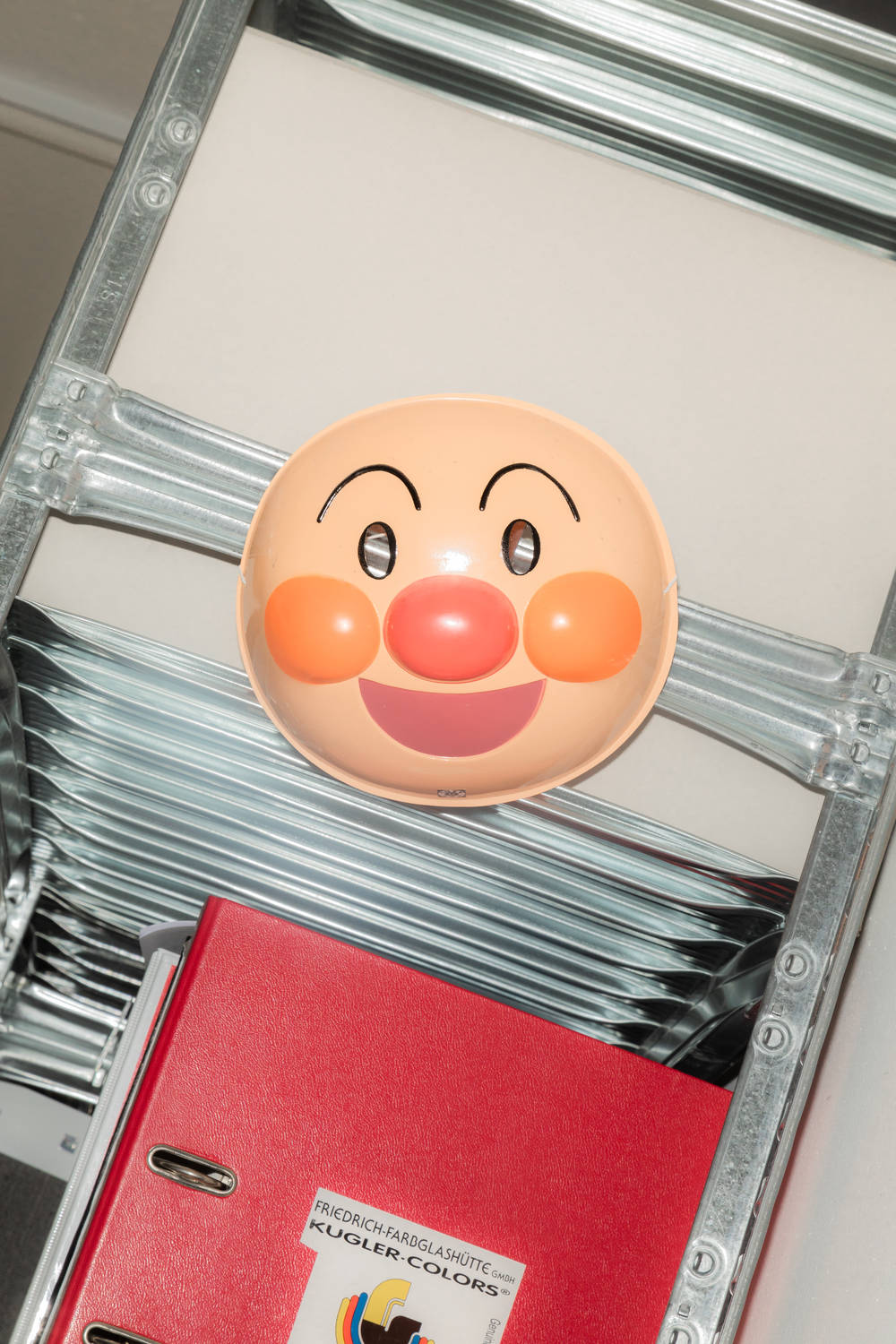
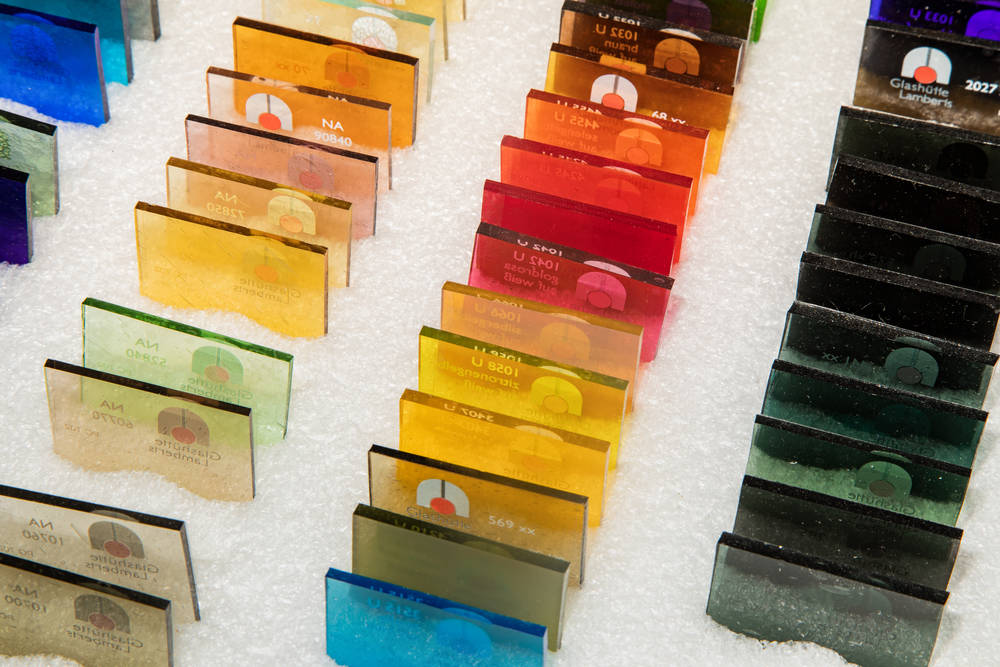
At furniture fairs, the designer’s name is on everyone’s lips. Customers don’t simply buy a table or a chair, they buy a “Herkner” – and seek contact with him. “It’s a bit like a book fair, where writers present their latest novels and give interviews,” he explains. “What we do is design ‘d’auteur’. My name is closely connected to the product.” When it comes to commissioned work, Herkner has to ensure he preserves the relevant company’s philosophy without sacrificing his individual touch – quite a balancing act. “Sometimes I even have to make it clear to a client that I cannot do what they are asking because it feels wrong to me.”
How to describe Herkner’s design idiom? “My style is not particularly German, not overly purist but sensual ,” he answers. Indeed, compared with Bauhaus, often seen as the benchmark of German design, his style is somewhat extravagant. This applies particularly to his work for Italian avant-garde label Moroso (such as the bright red, comic-like pipe chairs). “Moroso is, to the world of design, not dissimilar to what Comme des Garçons is to fashion”, says Herkner – and he knows what he’s talking about: During his studies, in his stage of orientation, he spent a year in London as an intern with fashion designer Stella McCartney.
My style is not particularly German, not overly purist, but sensual.
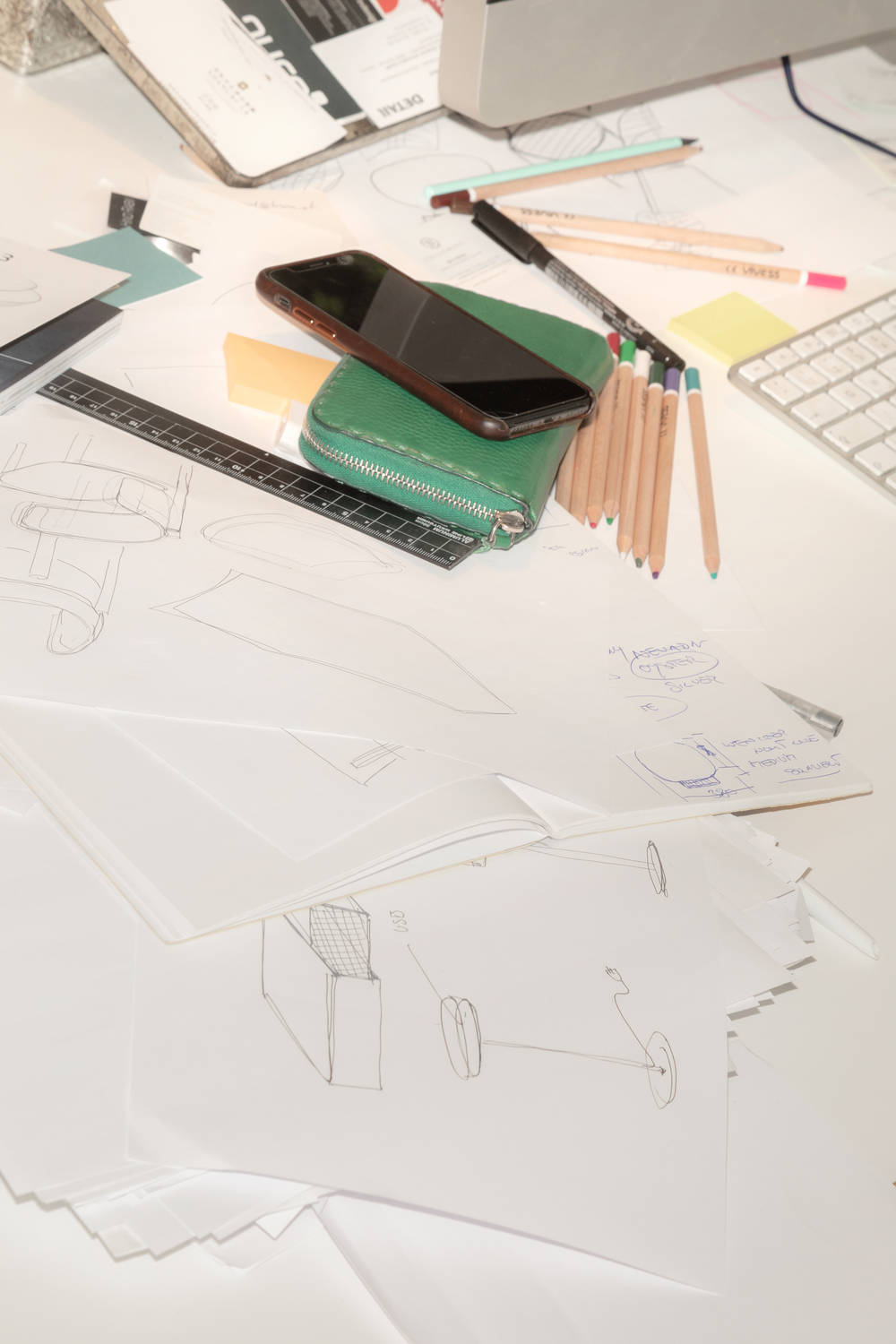
We then go on to talk about Herkner’s current projects. He recently collaborated with the label Thonet from north Hesse on a reinterpretation of the “Frankfurt” chair, a classic kitchen chair dating from the 1920s. In contrast to the original, (“Incidentally, they make you sit nice and straight”), the frame of Herkner’s version is not made of plywood but rather solid bentwood. Furthermore, the update appears finer and more elegant. “A chair like this needs an attractive backrest,” Herkner believes. “After all, you generally approach it from the back if it’s at a restaurant table.”
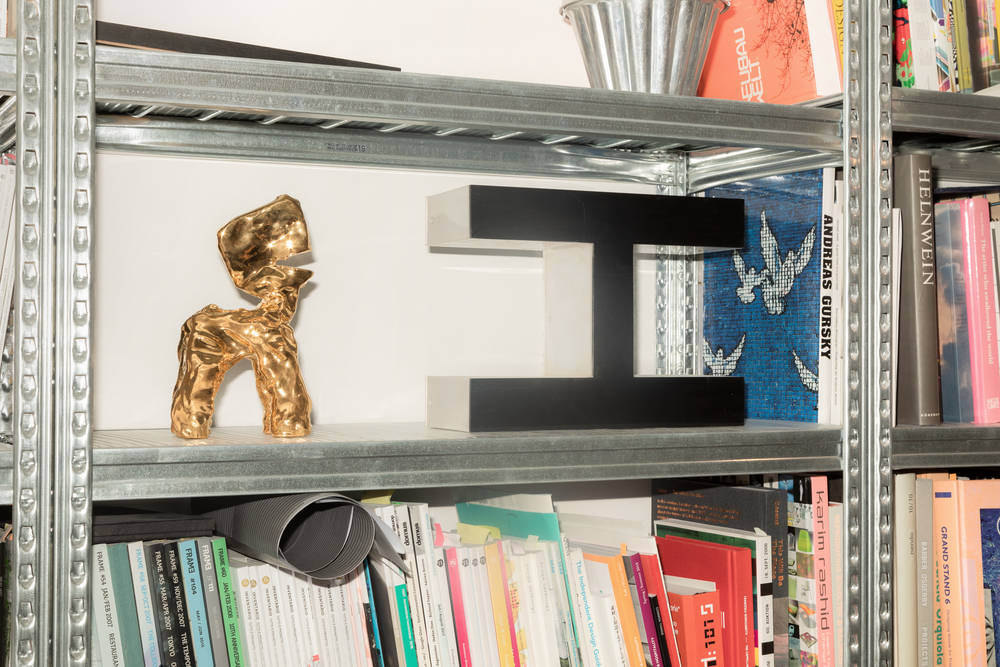
The item is part of a furniture family that the studio is currently working on. Three days after our visit, Herkner is due to present the new creation to interior designers in Amsterdam, where Thonet runs a showroom. The laptop with the presentation is already on hand. A further project focuses on wall tiles inspired by the tartan pattern of a kilt, a commission from an Italian firm. “We are just experimenting with different tones and levels of gloss,” says Herkner, glancing at the workbench of his studio. And plans are also underway for a product we could use ourselves as we head back out into the June heat: sunglasses - a collaboration with a Berlin-based label.
